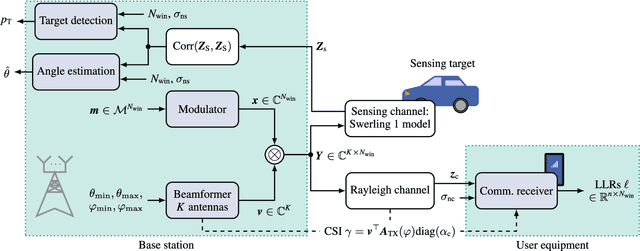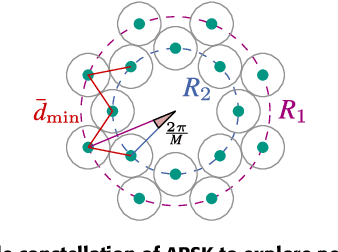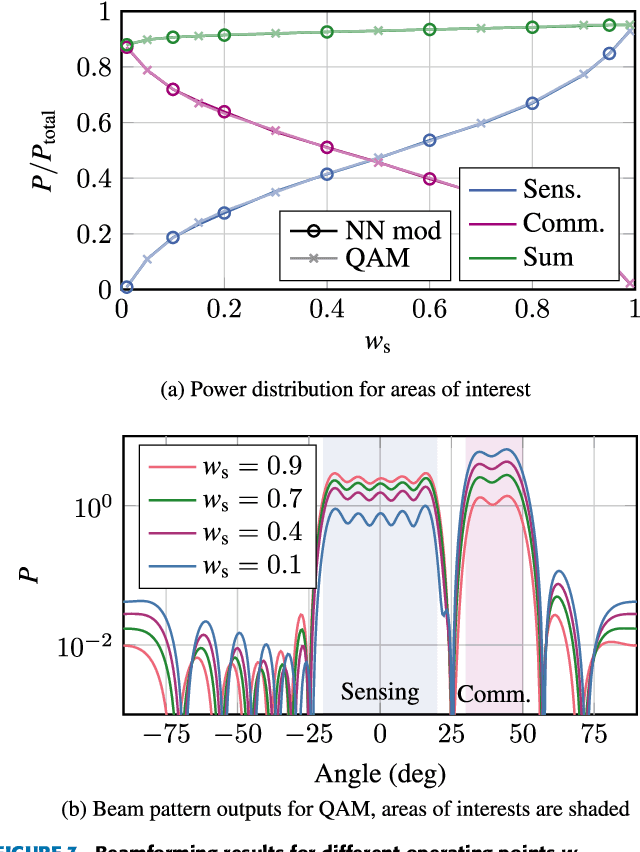Object Detection
Object detection is a computer vision task in which the goal is to detect and locate objects of interest in an image or video. The task involves identifying the position and boundaries of objects in an image, and classifying the objects into different categories. It forms a crucial part of vision recognition, alongside image classification and retrieval.
Papers and Code
Adaptive Event Stream Slicing for Open-Vocabulary Event-Based Object Detection via Vision-Language Knowledge Distillation
Oct 01, 2025Event cameras offer advantages in object detection tasks due to high-speed response, low latency, and robustness to motion blur. However, event cameras lack texture and color information, making open-vocabulary detection particularly challenging. Current event-based detection methods are typically trained on predefined categories, limiting their ability to generalize to novel objects, where encountering previously unseen objects is common. Vision-language models (VLMs) have enabled open-vocabulary object detection in RGB images. However, the modality gap between images and event streams makes it ineffective to directly transfer CLIP to event data, as CLIP was not designed for event streams. To bridge this gap, we propose an event-image knowledge distillation framework that leverages CLIP's semantic understanding to achieve open-vocabulary object detection on event data. Instead of training CLIP directly on event streams, we use image frames as inputs to a teacher model, guiding the event-based student model to learn CLIP's rich visual representations. Through spatial attention-based distillation, the student network learns meaningful visual features directly from raw event inputs while inheriting CLIP's broad visual knowledge. Furthermore, to prevent information loss due to event data segmentation, we design a hybrid spiking neural network (SNN) and convolutional neural network (CNN) framework. Unlike fixed-group event segmentation methods, which often discard crucial temporal information, our SNN adaptively determines the optimal event segmentation moments, ensuring that key temporal features are extracted. The extracted event features are then processed by CNNs for object detection.
Clink! Chop! Thud! -- Learning Object Sounds from Real-World Interactions
Oct 02, 2025Can a model distinguish between the sound of a spoon hitting a hardwood floor versus a carpeted one? Everyday object interactions produce sounds unique to the objects involved. We introduce the sounding object detection task to evaluate a model's ability to link these sounds to the objects directly involved. Inspired by human perception, our multimodal object-aware framework learns from in-the-wild egocentric videos. To encourage an object-centric approach, we first develop an automatic pipeline to compute segmentation masks of the objects involved to guide the model's focus during training towards the most informative regions of the interaction. A slot attention visual encoder is used to further enforce an object prior. We demonstrate state of the art performance on our new task along with existing multimodal action understanding tasks.
Calibrating the Full Predictive Class Distribution of 3D Object Detectors for Autonomous Driving
Oct 02, 2025In autonomous systems, precise object detection and uncertainty estimation are critical for self-aware and safe operation. This work addresses confidence calibration for the classification task of 3D object detectors. We argue that it is necessary to regard the calibration of the full predictive confidence distribution over all classes and deduce a metric which captures the calibration of dominant and secondary class predictions. We propose two auxiliary regularizing loss terms which introduce either calibration of the dominant prediction or the full prediction vector as a training goal. We evaluate a range of post-hoc and train-time methods for CenterPoint, PillarNet and DSVT-Pillar and find that combining our loss term, which regularizes for calibration of the full class prediction, and isotonic regression lead to the best calibration of CenterPoint and PillarNet with respect to both dominant and secondary class predictions. We further find that DSVT-Pillar can not be jointly calibrated for dominant and secondary predictions using the same method.
kabr-tools: Automated Framework for Multi-Species Behavioral Monitoring
Oct 02, 2025A comprehensive understanding of animal behavior ecology depends on scalable approaches to quantify and interpret complex, multidimensional behavioral patterns. Traditional field observations are often limited in scope, time-consuming, and labor-intensive, hindering the assessment of behavioral responses across landscapes. To address this, we present kabr-tools (Kenyan Animal Behavior Recognition Tools), an open-source package for automated multi-species behavioral monitoring. This framework integrates drone-based video with machine learning systems to extract behavioral, social, and spatial metrics from wildlife footage. Our pipeline leverages object detection, tracking, and behavioral classification systems to generate key metrics, including time budgets, behavioral transitions, social interactions, habitat associations, and group composition dynamics. Compared to ground-based methods, drone-based observations significantly improved behavioral granularity, reducing visibility loss by 15% and capturing more transitions with higher accuracy and continuity. We validate kabr-tools through three case studies, analyzing 969 behavioral sequences, surpassing the capacity of traditional methods for data capture and annotation. We found that, like Plains zebras, vigilance in Grevy's zebras decreases with herd size, but, unlike Plains zebras, habitat has a negligible impact. Plains and Grevy's zebras exhibit strong behavioral inertia, with rare transitions to alert behaviors and observed spatial segregation between Grevy's zebras, Plains zebras, and giraffes in mixed-species herds. By enabling automated behavioral monitoring at scale, kabr-tools offers a powerful tool for ecosystem-wide studies, advancing conservation, biodiversity research, and ecological monitoring.
MuFFIN: Multifaceted Pronunciation Feedback Model with Interactive Hierarchical Neural Modeling
Oct 06, 2025Computer-assisted pronunciation training (CAPT) manages to facilitate second-language (L2) learners to practice pronunciation skills by offering timely and instructive feedback. To examine pronunciation proficiency from multiple facets, existing methods for CAPT broadly fall into two categories: mispronunciation detection and diagnosis (MDD) as well as automatic pronunciation assessment (APA). The former aims to pinpoint phonetic pronunciation errors and provide diagnostic feedback, while the latter seeks instead to quantify pronunciation proficiency pertaining to various aspects. Despite the natural complementarity between MDD and APA, researchers and practitioners, however, often treat them as independent tasks with disparate modeling paradigms. In light of this, we in this paper first introduce MuFFIN, a Multi-Faceted pronunciation Feedback model with an Interactive hierarchical Neural architecture, to jointly address the tasks of MDD and APA. To better capture the nuanced distinctions between phonemes in the feature space, a novel phoneme-contrastive ordinal regularization mechanism is then put forward to optimize the proposed model to generate more phoneme-discriminative features while factoring in the ordinality of the aspect scores. In addition, to address the intricate data imbalance problem in MDD, we design a simple yet effective training objective, which is specifically tailored to perturb the outputs of a phoneme classifier with the phoneme-specific variations, so as to better render the distribution of predicted phonemes meanwhile considering their mispronunciation characteristics. A series of experiments conducted on the Speechocean762 benchmark dataset demonstrates the efficacy of our method in relation to several cutting-edge baselines, showing state-of-the-art performance on both the APA and MDD tasks.
Forestpest-YOLO: A High-Performance Detection Framework for Small Forestry Pests
Oct 01, 2025Detecting agricultural pests in complex forestry environments using remote sensing imagery is fundamental for ecological preservation, yet it is severely hampered by practical challenges. Targets are often minuscule, heavily occluded, and visually similar to the cluttered background, causing conventional object detection models to falter due to the loss of fine-grained features and an inability to handle extreme data imbalance. To overcome these obstacles, this paper introduces Forestpest-YOLO, a detection framework meticulously optimized for the nuances of forestry remote sensing. Building upon the YOLOv8 architecture, our framework introduces a synergistic trio of innovations. We first integrate a lossless downsampling module, SPD-Conv, to ensure that critical high-resolution details of small targets are preserved throughout the network. This is complemented by a novel cross-stage feature fusion block, CSPOK, which dynamically enhances multi-scale feature representation while suppressing background noise. Finally, we employ VarifocalLoss to refine the training objective, compelling the model to focus on high-quality and hard-to-classify samples. Extensive experiments on our challenging, self-constructed ForestPest dataset demonstrate that Forestpest-YOLO achieves state-of-the-art performance, showing marked improvements in detecting small, occluded pests and significantly outperforming established baseline models.
Neural Network-Based Single-Carrier Joint Communication and Sensing: Loss Design, Constellation Shaping and Precoding
Sep 30, 2025



We investigate the impact of higher-order modulation formats on the sensing performance of single-carrier joint communication and sensing (JCAS) systems. Several separate components such as a beamformer, a modulator, a target detector, an angle of arrival (AoA) estimator and a communication demapper are implemented as trainable neural networks (NNs). We compare geometrically shaped modulation formats to a classical quadrature amplitude modulation (QAM) scheme. We assess the influence of multi-snapshot sensing and varying signal-to-noise ratio (SNR) on the overall performance of the autoencoder-based system. To improve the training behavior of the system, we decouple the loss functions from the respective SNR values and the number of sensing snapshots, using upper bounds of the sensing and communication performance, namely the Cram\'er-Rao bound for AoA estimation and the mutual information for communication. The NN-based sensing outperforms classical algorithms, such as a Neyman-Pearson based power detector for object detection and ESPRIT for AoA estimation for both the trained constellations and QAM at low SNRs. We show that the gap in sensing performance between classical and shaped modulation formats can be significantly reduced through multi-snapshot sensing. Lastly, we demonstrate system extension to multi-user multiple-input multiple-output to address the improvement of spatial efficiency when servicing multiple user equipments. Our contribution emphasizes the importance of estimation bounds for training neural networks, especially when the trained solutions are deployed in varying SNR conditions.
* Published in IEEE Access Source code available at https://github.com/frozenhairdryer/JCAS-loss-shape-precode
Detection of Chagas Disease from the ECG: The George B. Moody PhysioNet Challenge 2025
Oct 02, 2025Objective: Chagas disease is a parasitic infection that is endemic to South America, Central America, and, more recently, the U.S., primarily transmitted by insects. Chronic Chagas disease can cause cardiovascular diseases and digestive problems. Serological testing capacities for Chagas disease are limited, but Chagas cardiomyopathy often manifests in ECGs, providing an opportunity to prioritize patients for testing and treatment. Approach: The George B. Moody PhysioNet Challenge 2025 invites teams to develop algorithmic approaches for identifying Chagas disease from electrocardiograms (ECGs). Main results: This Challenge provides multiple innovations. First, we leveraged several datasets with labels from patient reports and serological testing, provided a large dataset with weak labels and smaller datasets with strong labels. Second, we augmented the data to support model robustness and generalizability to unseen data sources. Third, we applied an evaluation metric that captured the local serological testing capacity for Chagas disease to frame the machine learning problem as a triage task. Significance: Over 630 participants from 111 teams submitted over 1300 entries during the Challenge, representing diverse approaches from academia and industry worldwide.
MMDEW: Multipurpose Multiclass Density Estimation in the Wild
Oct 02, 2025Density map estimation can be used to estimate object counts in dense and occluded scenes where discrete counting-by-detection methods fail. We propose a multicategory counting framework that leverages a Twins pyramid vision-transformer backbone and a specialised multi-class counting head built on a state-of-the-art multiscale decoding approach. A two-task design adds a segmentation-based Category Focus Module, suppressing inter-category cross-talk at training time. Training and evaluation on the VisDrone and iSAID benchmarks demonstrates superior performance versus prior multicategory crowd-counting approaches (33%, 43% and 64% reduction to MAE), and the comparison with YOLOv11 underscores the necessity of crowd counting methods in dense scenes. The method's regional loss opens up multi-class crowd counting to new domains, demonstrated through the application to a biodiversity monitoring dataset, highlighting its capacity to inform conservation efforts and enable scalable ecological insights.
Leveraging Prior Knowledge of Diffusion Model for Person Search
Oct 02, 2025Person search aims to jointly perform person detection and re-identification by localizing and identifying a query person within a gallery of uncropped scene images. Existing methods predominantly utilize ImageNet pre-trained backbones, which may be suboptimal for capturing the complex spatial context and fine-grained identity cues necessary for person search. Moreover, they rely on a shared backbone feature for both person detection and re-identification, leading to suboptimal features due to conflicting optimization objectives. In this paper, we propose DiffPS (Diffusion Prior Knowledge for Person Search), a novel framework that leverages a pre-trained diffusion model while eliminating the optimization conflict between two sub-tasks. We analyze key properties of diffusion priors and propose three specialized modules: (i) Diffusion-Guided Region Proposal Network (DGRPN) for enhanced person localization, (ii) Multi-Scale Frequency Refinement Network (MSFRN) to mitigate shape bias, and (iii) Semantic-Adaptive Feature Aggregation Network (SFAN) to leverage text-aligned diffusion features. DiffPS sets a new state-of-the-art on CUHK-SYSU and PRW.
 Add to Chrome
Add to Chrome Add to Firefox
Add to Firefox Add to Edge
Add to Edge